Meta has published its latest Transparency and Community Standards Enforcement Reports, providing insight into all the content removals and requests that have been submitted to the company in recent months.
Meta’s Transparency Report covers the second half of 2022, while its Community Standards update is for Q1 2023, providing insight into all of the actions that it’s taken, either due to rule violations, or based on legal and government requests.
And while most of the trends have remained relatively stable, there are some shifts of note in the data.
First off, on nudity and sexual content – Meta saw a rise in removals here, based, it says, on an increase in spammers sharing large volumes of violative videos on Facebook.
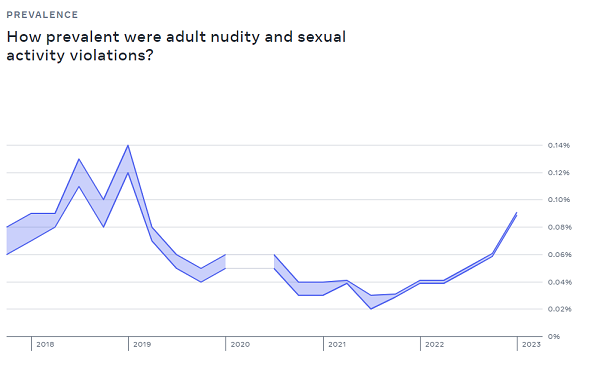
Most of this was detected by Meta’s systems before any users reported it, but there has also been a slight increase in users reporting this type of material, which is also likely down to the rising number of spammers in this area.
Meta also says that it’s increased its rate of proactive detection of bullying and harassment, which has seen more of this type of content removed before anyone sees it.
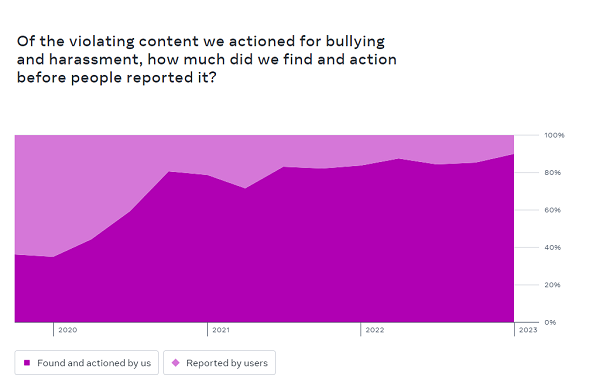
This is a critical area of focus, in ensuring that users are not exposed to harmful material, and it’s good that Meta’s systems are getting better at detecting such before it’s seen.
Meta’s also upping its enforcement of its dangerous organizations policy.
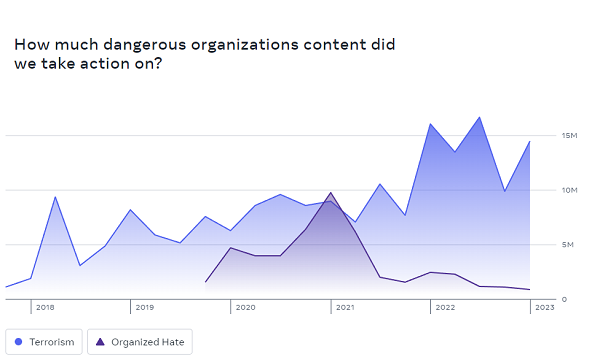
While Instagram’s also getting more serious about combating depictions of drug use in the app.
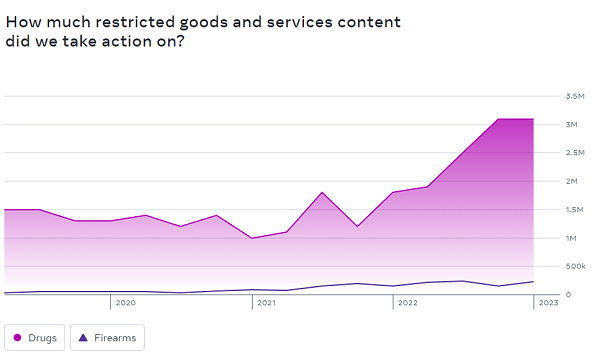
Though interestingly, Meta’s fake account removals have actually decreased in Q1 2023, going from 1.3 billion in Q4 2022 to 426 million in Q1 2023.
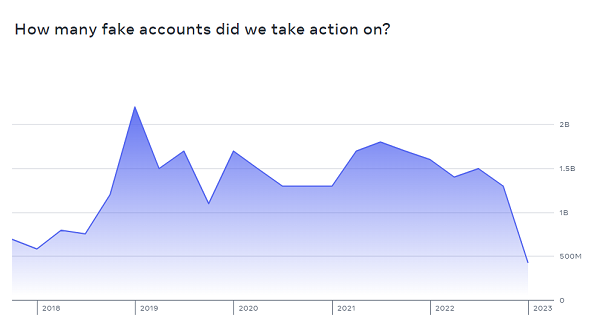
Even so, Meta maintains that fake accounts represent between 4-5% of Facebook’s worldwide monthly active users.
Meta has also provided new data on government requests, and where they’re coming from:
“During the second half of 2022, global government requests for user data increased 0.8% from 237,414 to 239,388. The US continues to submit the largest number of requests of that total volume, followed by India, Germany, Brazil, France and the UK.”
Government requests were in the spotlight once again this week, amid reports that Twitter had been censoring content at the behest of the Turkish Government, in the lead-up to local elections. Twitter Chief Elon Musk explained that Twitter has adhered to local laws, as required, while also noting that such requests are ‘par for the course for all internet companies’.
As Meta’s data shows, that’s only increasing, and such requests will continue to put the onus on social media platforms to make significant calls on such, until formal regulations are implemented – if that’s even possible on a broad scale.
Finally, Meta’s also provided this overview of the evolution of its transparency reporting over time, providing more insight into its actions on this element:
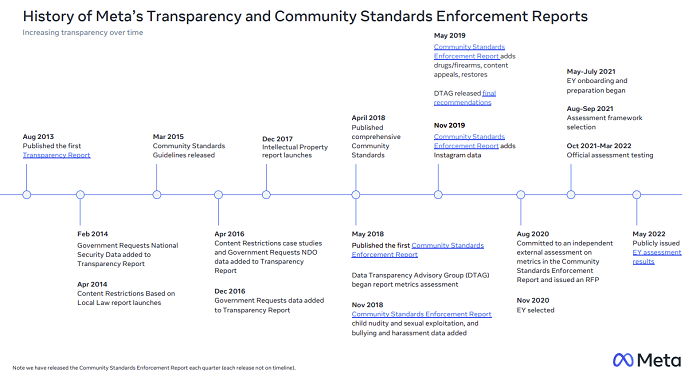
It’s an interesting overview of Meta’s evolving efforts, and the latest trends and changes within each element. And while there are no major revelations within the latest update, it’s important to take note of Meta’s ongoing progress, and how it’s maintaining its standards and policies ongoing.
You can read Meta’s full Transparency Report for H2 2022 here and the latest Community Standards Enforcement Report here.



